Seosan Chrysanthemum Festival (서산국화축제)
13.1 Km 18191 2022-12-21
320-1, Gobuk 1-ro, Seosan-si, Chungcheongnam-do
• 1330 Travel Hotline: +82-2-1330 (Korean, English, Japanese, Chinese) • For more info: +82-41-660-3935
Seosan Chrysanthemum Festival takes place in October at the area of Gobuk-myeon, Gagu-ri in Seosan, Chungcheongnam-do. This festival offers chrysanthemum exhibitions inside of an apple orchard, featuring various colors of chrysanthemum in full bloom as well as a mountain of apples, photo zone, and other events to fill the festival grounds with the scent of autumn.
Cancelled: Hongseong Hero Festival (홍성 역사인물축제)
13.1 Km 6032 2022-05-09
27, Amun-gil, Hongseong-gun, Chungcheongnam-do
• 1330 Travel Hotline: +82-2-1330 (Korean, English, Japanese, Chinese) • For more info: +82-41-630-1227~8
Hongseong is the hometown of many historical figures including General Choi Yeong, a great commander during the late Goryeo dynasty; Seong Sam-mun, a scholar-official fighting against injustice; Han Yong-un who was a resistance fighter against Japanese influence with his fidelity and integrity; Kim Jwa-jin who won the Battle of Cheongsanni against Japan; Han Seong-jun who was a Korean folk dancer and a master dancer of Joseon; and Lee Eung-no who is famous overseas as a modern artist. Hongseon Hero Festival invites visitors to learn more about these historical heros through various programs.
Hongseong Jeongamsa Temple (정암사 (홍성))
13.9 Km 8355 2021-03-12
652, Oseo-gil, Hongseong-gun, Chungcheongnam-do
+82-41-641-0488
Jeongamsa Temple is a small rural temple situated halfway up Oseosan Mountain. There are few existing records that mention the temple’s beginning. Some suggest that it was built around AD 527 during the 5th year of Baekje King Seongwang’s reign, but there is little evidence to support this theory. The only reference alluding to a specific time is Yeojidoseo ("Detailed Survey of Korean Geography" published during the late Joseon dynasty). It states Jeongamsa Temple's location as on Oseosan Mountain, and Oseosan Mountain being surrounded by Hongsan Mountain and Baegwolsan Mountain and intersected by Hongju, Gyeolseong, and Boryeong. This indicates the temple was recognized in the mid-18th century and around the same time, Garamgo (a book about temples, published in the late 18th century) also states that Jeongamsa Temple is located approximately 11 kilometers to the east of Gyeolseonghyeon. It is still uncertain whether the temple referred to is Jeongamsa Temple on Oseosan Mountain.
Some foundation stones within the temple site measure 70-80 centimeters on each side. These stones indicate that the old Buddhist shrine of Jeongamsa Temple was laid out with five kan (Korean unit of measurement indicating the space between two pilars) at the front and three kan on the side. Future archaeological studies will help identify the true history of Jeongamsa Temple.
Statue of General Kim Jwajin (김좌진장군동상)
14.1 Km 0 2024-01-16
Goam-ri, Hongseong-eup, Hongseong-gun, Chungcheongnam-do
The Statue of General Kim Jwajin was erected to commemorate General Kim's efforts in leading the Independence Army against Japan during the Battle of Cheongsan-ri. This was one of the greatest victories in the war fro Korean independence.
Lotte Mart - Hongseong Branch [Tax Refund Shop] (롯데마트 홍성점)
14.4 Km 0 2024-04-22
9, Joyang-ro 247beon-gil, Hongseong-eup, Hongseong-gun, Chungcheongnam-do
-
Sudeoksa Temple (수덕사)
15.0 Km 28645 2021-12-03
79, Sudeoksaan-gil, Yesan-gun, Chungcheongnam-do
+82-41-330-7700
Sudeoksa Temple, which has played an important role in the history of Korea’s Buddhism, is located at the foot of Deoksungsan Mountain. It was one of twelve temples from the Baekje Kingdom mentioned in Chinese historical records. There is no historical record of when the temple was founded but researchers believe it was founded sometime during the reign of King Wuideok (554-597).
The main building of Sudeoksa Temple, Daeungjeon Hall, was constructed in 1308 during the Goryeo dynasty. It was repaired four times between 1528 and 1803, but fortunately kept its original beauty. In addition to Daeungjeon Hall, Sudeoksa Temple houses many cultural treasures, such as the Three-story Stone Pagoda of Sudeoksa Temple.
Cheonsuman Bay - Migratory Bird Sanctuary (천수만(철새도래지))
15.0 Km 28862 2021-05-21
Buseok-myeon & Gobuk-myeon, Seosan-si, Chungcheongnam-do
+82-41-661-8054
Cheonsuman Bay emerged as a habitat for migratory birds as a result of a reclamation project that was undertaken in 1984. A breakwater was built around this area, which created Ganwolho Lake and Bunamho Lake. Moreover, a vast agricultural land spanning 6,400 hectares was formed on what used to be a mud flat. The monthly average temperature of Cheonsuman Bay area between October and March is about 1.2 degree Celsius higher than inland areas at the same latitude because of its oceanic climate. Such geographical conditions have made Cheonsuman Bay an ideal wintering site for migratory birds.
Cheonsuman Bay is located midway along the migration route of birds migrating from northern Siberia or Manchuria to Southeast Asia. As a result, Cheonsuman Bay has become home to nearly 200 different species of migratory birds that can be watched all year round. In winter, the area becomes a wintering site for over 300 thousand ducks and wild geese, as well as a wide variety of endangered species like storks, spoonbills, mute swans, and white-naped cranes. Lucky birdwatchers might be able to witness the great spectacle created by tens of thousands of migratory birds flying in a flock over the Cheonsuman Bay area.
Yongbongsan Mountain (용봉산)
15.3 Km 68795 2024-01-15
Sangha-ri, Hongbuk-eup, Hongseong-gun, Chungcheongnam-do
Yongbongsan Mountain is relatively small mountain, reaching a x_height of just 381 meters, but is filled with beautiful rocky outcroppings and peaks. The mountain's name comes from its ridgeline, resembling a dragon with the head of a phoenix. The mountain is home to a wide range of Korean plants, including Korean pine trees, and cultural heritages such as Yongbongsa Temple.
Seokhwachon (Boryeong) (석화촌(보령))
15.4 Km 5962 2024-02-26
15 Bakgangsul-gil, Jupo-myeon, Boryeong-si, Chungcheongnam-do
041-932-9005
Seokhwachon is a traditional Korean restaurant converted from a rural house. It specializes in Korean dishes. The menu includes specialties such as hanbang ori baeksuk (whole duck soup with medicinal herbs), hanbang dak baeksuk (whole chicken soup with medicinal herbs), samgyetang (ginseng chicken soup), saengseon gui (grilled fish), and galchi jorim (braised cutlassfish). The restaurant offers a variety of dishes that are both hearty and refined, combining sincerity and homemade flavors. Boasting a location where mountains and sea coexist, Boryeong offers diverse ingredients, and it hosts the Boryeong Mud Festival annually in July.
Deoksungsan Mountain (덕숭산)
15.4 Km 7356 2021-06-30
Deoksan-myeon, Yesan-gun, Chungcheongnam-do
+82-41-339-8930
Deoksungsan Mountain is referred to as Chungcheong region's Geumgangsan Mountain for its beauty. Within Deoksungsan Mountain is Sudeoksa Temple, famous for its Daeungjeon Hall as the oldest surviving wooden building in Korea. The mountain's most prominent features are the oddly shaped rocks that are often compared to the shape of a human skull or a beast with its mouth wide open. Some of the most scenic points are Wonhyobong Peak, Seongmunbong Peak, and Haetaebawi Rock. Several Buddhist temples and cultural heritages occupy the mountain. The mountain is also a popular destination for family trips thanks to its short hiking course and Deoksan Hot Springs.
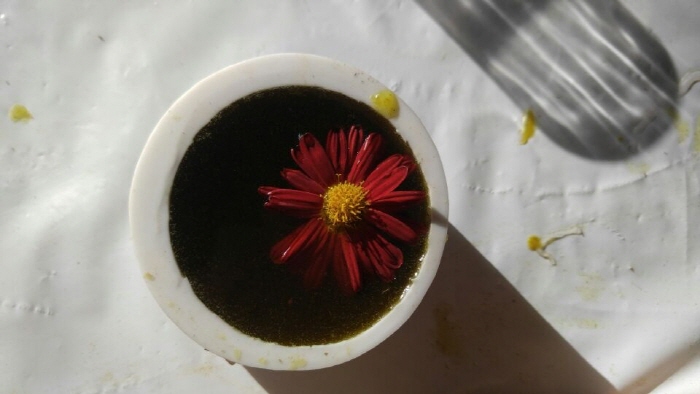

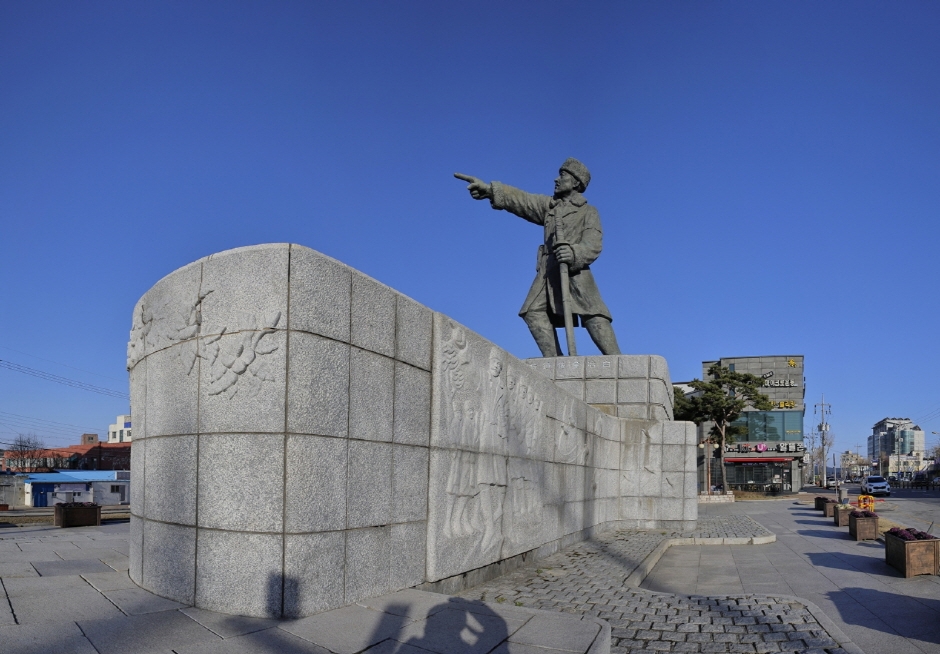
![Lotte Mart - Hongseong Branch [Tax Refund Shop] (롯데마트 홍성점)](http://tong.visitkorea.or.kr/cms/resource/36/2883336_image2_1.jpg)
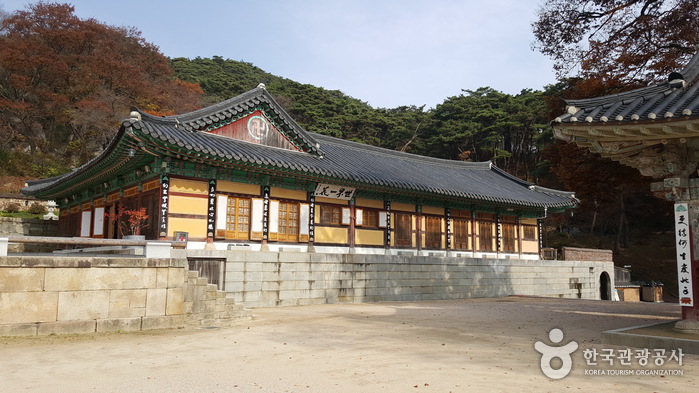
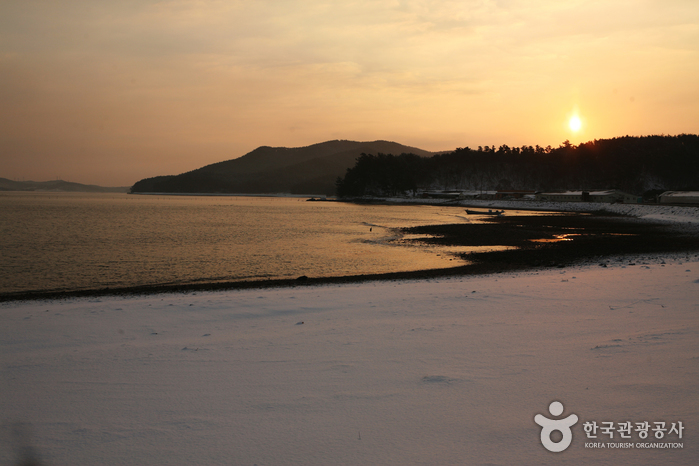
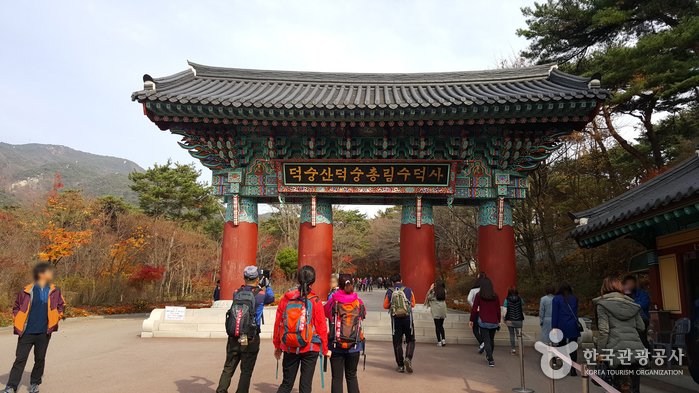
 English
English
 한국어
한국어 日本語
日本語 中文(简体)
中文(简体) Deutsch
Deutsch Français
Français Español
Español Русский
Русский